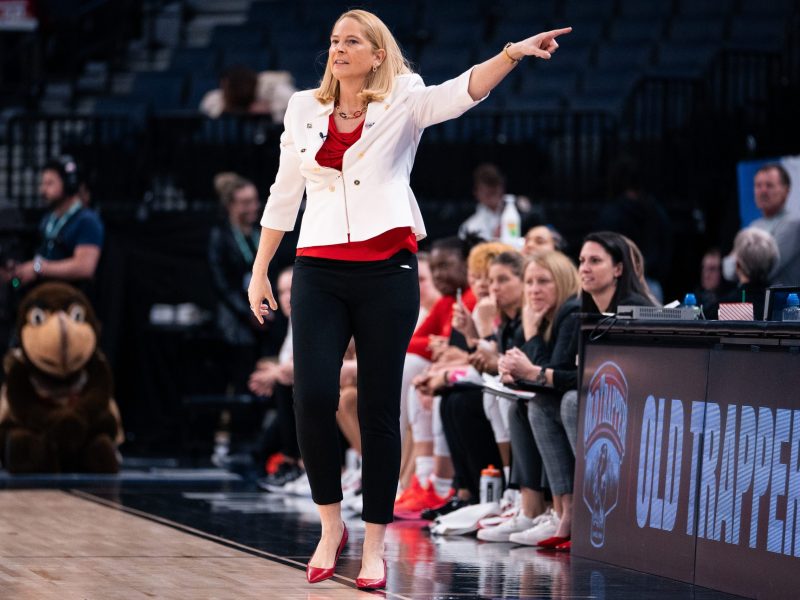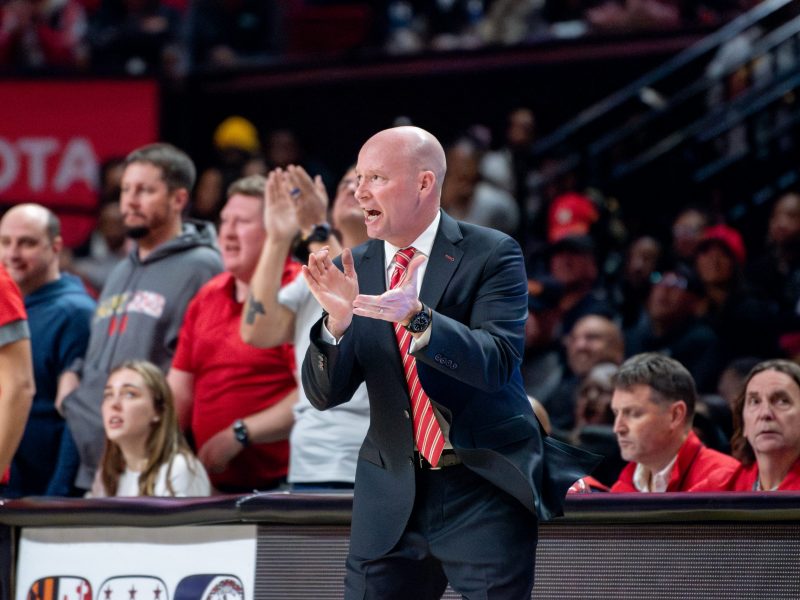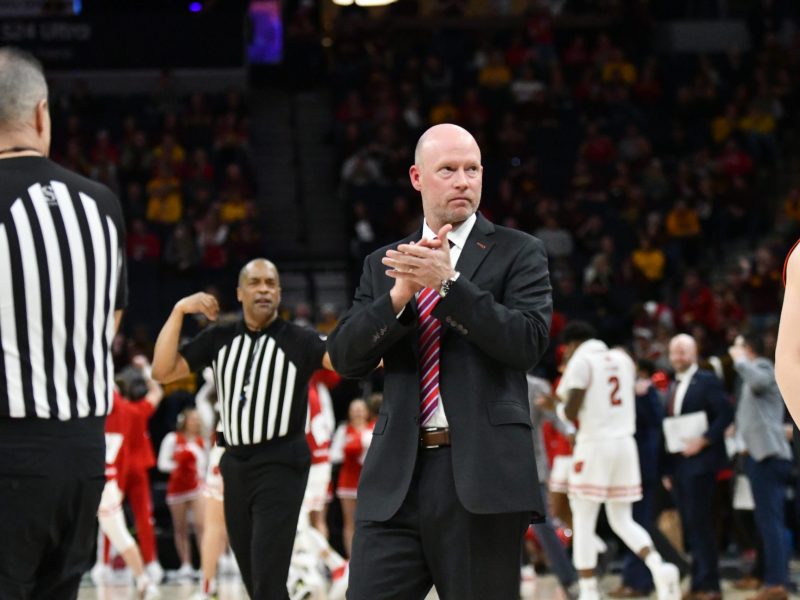After the Maryland men’s basketball team’s 67-55 win over Rutgers on Tuesday night, coach Mark Turgeon opened his press conference lauding the Scarlet Knights’ pregame preparation, which helped them enter halftime down by just five.
The sixth-year coach then praised his squad for its play after intermission, as a 20-6 run gave the Terps a comfortable advantage. Guards Melo Trimble and Kevin Huerter, who combined for 28 points, also earned a shoutout from their coach during his opening remarks.
But before Turgeon fielded questions, he made sure to touch upon an area his team has struggled in all season. He wanted to address the issue before the media did.
“I thought defensively, except for rebounding — because I know it’s coming up — we were pretty good,” Turgeon said.
Albeit, against the nation’s fourth-best rebounding team, Maryland allowed a season-high 22 offensive boards that led to Rutgers scoring 19 second-chance points.
The Scarlet Knights, similar to several of Maryland’s opponents this year, stayed in the game in part because of the Terps’ inability to secure defensive rebounds.
“They go with small guards, and we go with Eugene [Omoruyi] and some of those big lineups,” Rutgers coach Steve Pikiell said. “We have to be a good rebounding team because we don’t shoot the ball as well as Maryland.”
Five of the Terps’ last seven Big Ten foes have accumulated at least 14 offensive rebounds, and Tuesday marked the second straight game an opponent grabbed 20 or more against Turgeon’s squad.
Those issues extended beyond conference play. According to KenPom, Maryland is 271st of 351 Division I programs in opponent offensive rebounding percentage, allowing teams to secure offensive boards on 31.7 percent of their misses.
Against Rutgers, that number increased to 44.8 percent.
“Just watching film, they just really attack the glass,” Trimble said. “And they did that against us.”
Turgeon has expressed the importance of defense and rebounding throughout the season. But for most of the year, his top rebounding options haven’t been available, at least not at the same time.
Forward Michal Cekovsky missed the first four games of the season, and before suiting up against Rutgers, the 7-foot-1, 250-pound junior had missed the past six contests with an ankle injury.
Toward the end of conference play, the Terps were without starting center Damonte Dodd. He missed five games, which spanned about three weeks, because of a left MCL sprain.
In their absences, freshman forward Justin Jackson has emerged as Maryland’s leading rebounder, grabbing 5.8 rebounds per game from the four spot.
Maryland’s guards have had to play larger roles in defensive rebounding, too, because Turgeon prefers to use smaller lineups to increase the Terps’ speed and shooting ability on the floor. Huerter has stepped up, ranking second on the team with 5.1 rebounds per game. The freshman paced the Terps with eight rebounds against the Scarlet Knights, while Trimble had six.
As the Terps’ rebounding woes have worn on, they’ve continued to win. Tuesday’s win secured the program’s best 20-game start in 18 years, and Turgeon’s bunch is first in the Big Ten standings.
Other areas, such as 3-point shooting and scoring defense, have overshadowed their defensive rebounding struggles.
Trimble said when his team is able to make defensive stops and push the tempo, it translates into swift ball movement and open shots on the offensive end.
But that process starts with grabbing the defensive rebound, something the Terps are concerned with improving as the conference competition stiffens.
“Coaches have been telling us that we’ve got to box out and rebound,” Jackson said Monday, “because if you win on the boards, you have a better chance at winning the game.”



